From the next issue of Apollo: July/August 2023. To subscribe, click here.
Charing Cross is one of the more communicative tube stations in London. While its Northern Line platforms seek to entertain, with David Gentleman’s murals imagining the building of the London landmark in the Middle Ages in faux-medieval style, the Bakerloo Line platforms want to explain. A series of panels from 1983 tells us how the National Gallery and the National Portrait Gallery (NPG), which Charing Cross serves as the nearest stop, came to be and what they contain. ‘The National Portrait Gallery,’ the text on one panel declares, ‘is a gallery of famous faces. It was founded in 1856 […] the Vote being supported by the then Prime Minister, Lord Palmerston. For Britain the second half of the nineteenth century was an age of optimism, progress and national supremacy. The Victorians were ready for heroes.’
When the National Portrait Gallery reopens on 22 June after a three-year closure, it will be the culmination of an eight-year project that goes beyond the obvious building works. Cultural organisations in the UK are fond of two-word slogans to describe their priorities, but the NPG’s name for its transformation is better than most: ‘Inspiring People’ neatly sums up both the sitters who are represented on its walls and the visitors the museum hopes to attract. No one briefed by the Bakerloo Line platforms at Charing Cross tube station is likely to feel misled once they enter the NPG, but there is an irony in the fact that an institution unveiling its mission for the next 25 years should be described in the terms of yesteryear – 1983’s version of 1856, to be exact – in such a prominent place; the past can be hard to shake, even if it is detectable only in small details. When I visit the NPG in early June, before the reopening, its director Nicholas Cullinan gives me a tour that throws up similar ironies, although some occur to me only later.
The actual building project has taken three years and cost £41m, which is on time and on budget. Cullinan’s manner goes some way to explaining how he raised the money, and why he got the job that he has. In the immediate run-up to reopening, the press office is serving up its boss for a string of interviews and walk throughs but he has been honing his presentation for rather longer under the auspices of the development office. When he was appointed director in 2015, at the age of 37 (he took up the post the following spring), it was already in the job description that the Trustees were looking for someone who would oversee a building project, at that stage undefined. The initial plan was for a new learning centre, he explains, but that led to more ambitious plans: ‘If we’re doing a learning centre, we should really rehang the collection and refresh the galleries, and then […] it was about making a holistic transformation, which was the building, the collection, the visual identity, and obviously raising the money, shaping the project, appointing the architect, all those things.’ In a word, everything.
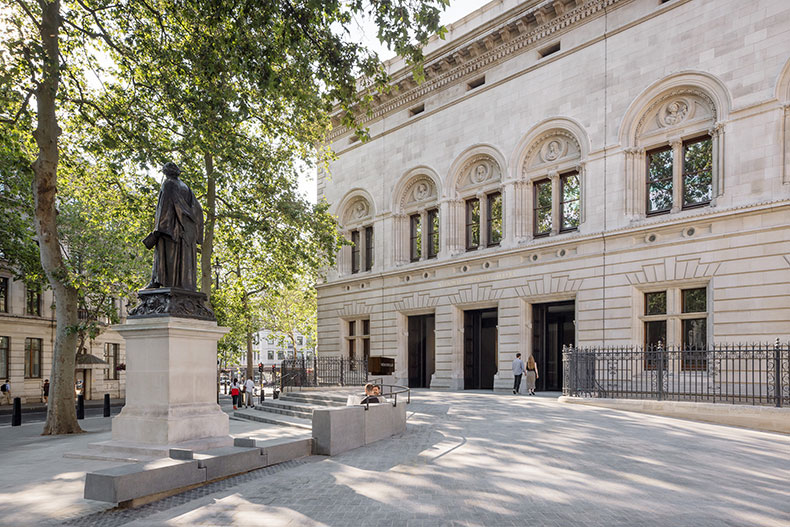
The new forecourt of the National Portrait Gallery in London. Photo: Olivier Hess
The National Portrait Gallery chose Jamie Fobert, responsible for the extension at Tate St Ives and the refurbishment of Kettle’s Yard, as the lead architect, and Nissen Richards Studio to help reinterpret the galleries. The greatest change is one of orientation. After 40 years of an itinerant existence in London, the NPG moved into its permanent home built with funds from the philanthropist William Henry Alexander in 1896. Its architect, Ewan Christian, had to fit in with the style of the National Gallery next door and turn the main entrance away from the insalubrious quarter of Soho and Covent Garden on its doorstep. In 2023, however, Jamie Fobert has taken this northern facade and turned it into a much more imposing entrance than the one inclined towards the church of St Martin-in-the-Fields and Trafalgar Square (now more of a side-entrance). Inside, what used to be temporary exhibition space now leads to the foyer of the Ondaatje wing, with passing distractions including a display of portrait sculpture from every period.
Cullinan speaks with enthusiasm about the difference visitors will feel, thanks to Fobert’s ingenuity: more light, more public space, the reclamation of offices in the East Wing for display space, the tucking away from view of the once-prominent escalator in the Ondaatje Wing, which opened in 2000. But as it has been more than three years since I visited the National Portrait Gallery, including two years in which some of us saw next to no art and very few people. I can’t help being distracted by a nagging thought: this is a very strange art gallery. This has nothing to do with the changes and, truth be told, I’ve been coming here since I was a teenager and more feels familiar than otherwise. Rather, it’s noticing that all the usual faces (big wave to the Tudors, how nice to see Byron again) are among rows and rows of nothing but other faces. To say that a portrait gallery is full of portraits may not seem worth saying; but it’s worth remembering that national museums devoted to portraiture are rare and confined to the English-speaking world (the United States, Australia, Scotland and, still in the planning stage, Canada). More pertinently, what kind of museum the NPG wants to be is at the core of its institutional identity; the range of answers is what sets it apart.
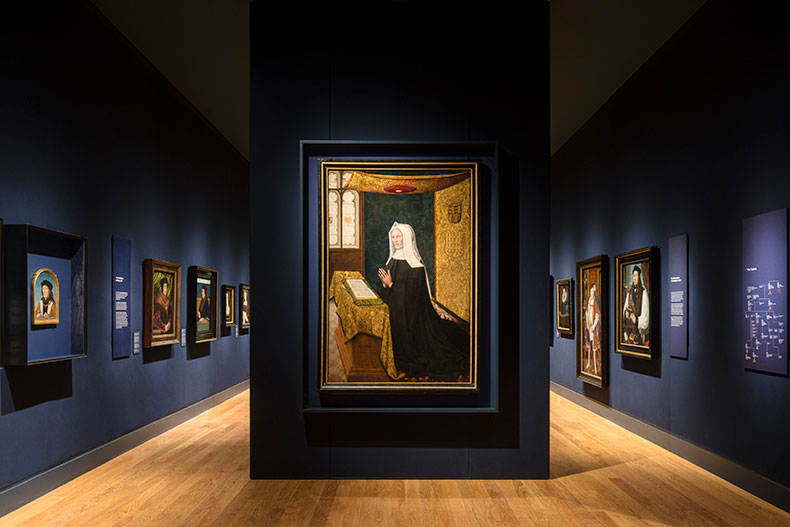
The Tudor Gallery, featuring Lady Margaret Beaufort by Meynnart Wewyck (c. 1510), on loan from St John’s College, Cambridge, at the National Portrait Gallery, London. Photo: Gareth Gardner for Nissen Richards Studio
Charles Saumarez Smith says that when he became director of the NPG in 1994, ‘It thought of itself as much as an institution of public history as an art gallery. It was founded as a way of showing and teaching people about British history.’ (The Museums and Galleries Act of 1992 seems less even-handed, listing the NPG’s priorities in such a way that the most important seems to be ‘generally to promote the public’s enjoyment and understanding of portraiture of British persons and British history through portraiture’.) Saumarez Smith, who is unusual for directing three major cultural institutions in a row and overseeing a large building-project at each, is a wry and fond guide to the recent past of the museum he has enjoyed running the most. It was Roy Strong, of course, who made the biggest splash as director from 1967 to 1973, putting on its first photography exhibition (‘Beaton Portraits’ in 1968), appointing the first curator of photography in 1972 and introducing newfangled elements such as an education department – and a shop. Strong’s diary for this period now seems a portrait of a very distant time – he is very much a civil servant and the government is his biggest funder. It’s also a hoot when he sticks to museum matters. But you don’t have to take him at his estimation (something like a museological Augustus who found a National Portrait Gallery of bricks and left behind one of marble) to recognise his real and lasting achievements.
Visitors who approach the NPG from the east won’t be able to miss the temporary posters of Grayson Perry and Zadie Smith (of portraits by Richard Ansett and Toyin Ojih Odutola) on either side of the original main entrance. They are less likely to register, higher up on the facade, the permanent busts of Thomas Babington Macaulay, Philip Henry Stanhope and Thomas Carlyle: the trinity of Victorian historians who are the museum’s founding fathers and among its founding trustees. Another case of the past being hard to shake even if, for the moment, it’s harder to make out.
As the definition of British history and a British person has changed, expanding and contracting according to different criteria and at different times (and it’s not a one-way march towards the light), the National Portrait Gallery has adjusted. It has adapted to other circumstances, too. Perhaps the most important change is that it now raises 70 per cent of its income, with only 30 per cent coming from grants and government aid. The museum received £9.4m from the Heritage Lottery Fund for the capital project in 2017, but it has had to find the rest of what was meant to be a £35.5m endeavour itself, with donations including £5m from the Garfield Weston Foundation and £4m from its own chair of trustees, David Ross. That ‘Inspiring People’ is on budget at the increased figure of £41m is thanks to a donation of £10m in 2022 from the Blavatnik Family Foundation. Here the business of museums naming wings and galleries after donors has led to the incongruity of the former East Wing being renamed the Weston Wing and the forecourt that has been created outside the new north entrance is now Ross Place. (I can’t help wondering, as I write this a week before the reopening, if the latter will take.) It has been a feat of fundraising.
Although Nicholas Cullinan isn’t the NPG’s youngest director – that was Roy Strong at the age of 32 – he has certainly been on the fast track, coming from the Modern and Contemporary department at the Met and before that from Tate Modern, where he was curator of International and Modern Art. The combination of a background on the contemporary side and time in the US system can only have helped on the fundraising front. On our brisk but detailed walk, Cullinan is the model of a modern director, drawing my attention to commissions, acquisitions and research enabled by other partnerships (the Chanel Culture Fund among them), who can all rest assured they were mentioned, if not here by me.
What does have to be mentioned is the museum’s most important new acquisition, of perhaps the most famous portrait of its day. Portrait of Mai by Joshua Reynolds was the hit of the Royal Academy Exhibition in 1776. The full-length painting of Mai (or Omai as the English called him) shows a young man from Raiatea, who had travelled from Tahiti and in 1774 became the first Polynesian visitor to Britain. Mai’s stance and gesture is modelled on the Apollo Belvedere and he’s wearing what Lucy Peltz, senior curator of the 18th-century collections describes as a ‘confection of classical and Tahitian robes […], no doubt there’s a certain amount of exoticisation going on’. Portrait of Mai is in exceptional condition for a painting by Reynolds. It remained in the painter’s studio until his death in 1792 and was then bought by the Earl of Carlisle who hung it in Castle Howard in Yorkshire, where it remained for more than 200 years until the Irish businessman John Magnier bought it in 2001. And now the NPG and the Getty in Los Angeles have bought it together for £50m. While the Getty can afford to buy Mai outright through its enviable accquisitions fund (but had the problem of the painting being export-barred), the NPG certainly can’t; the £25m it has stumped up includes £10m from the National Heritage Memorial Fund and £2.5m from the Art Fund, with the rest coming from private donors. The plan is that it will stay in the UK for three years, before going to the Getty for three. After that, the details are still being worked out, but Mai will probably spend increasing intervals of time with each of its co-parents. Twenty-five million pounds is a lot for a UK museum to spend on a half-share in a painting, but the NPG is making a good case for the purchase in the form of its display.
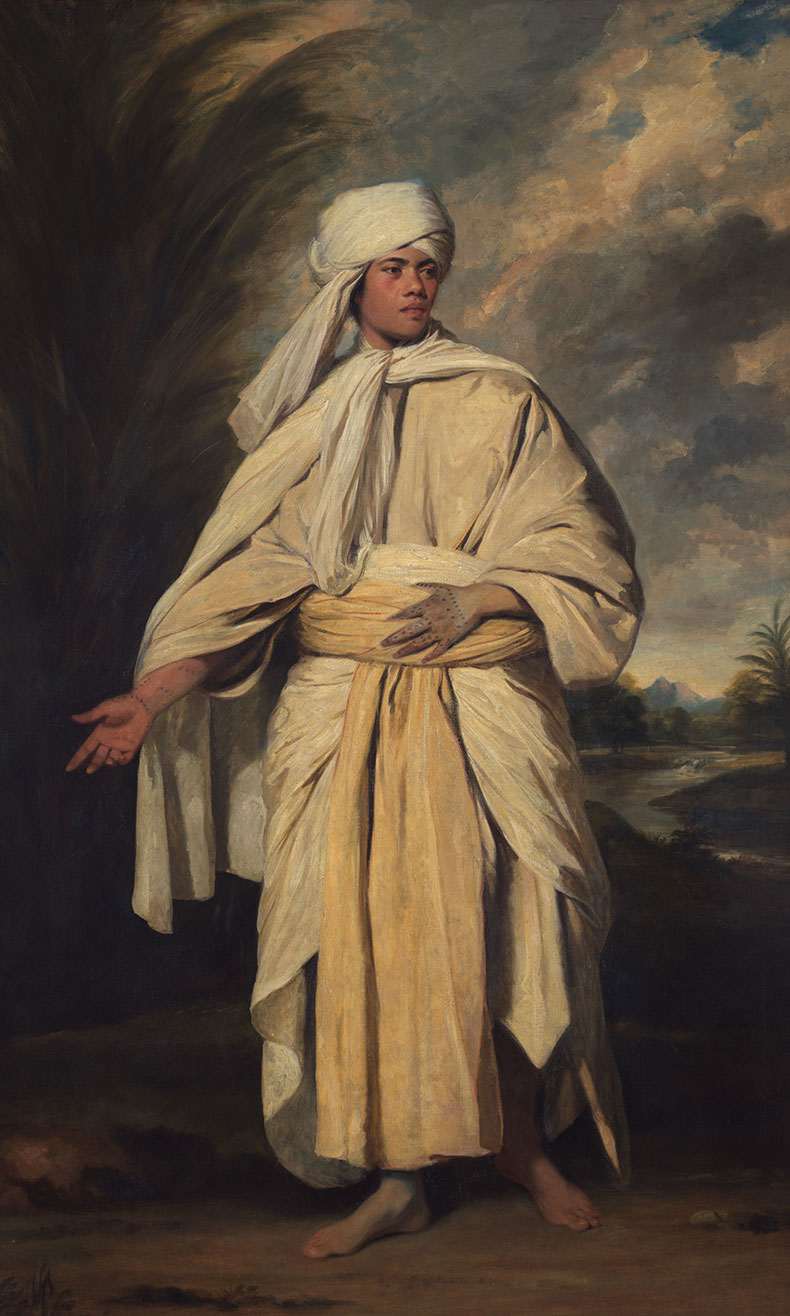
Portrait of Mai (Omai) (c. 1776), Sir Joshua Reynolds. National Portrait Gallery, London
Mai now hangs right in the centre of the far wall of Room 18, which is the culmination of the second-floor galleries in the Duveen extension, built in 1933. (Perhaps Ross Place will sound better in 90 years’ time.) Peltz, who is also head of collection displays spanning the Tudors to the Regency period, says: ‘What we wanted to do, was to evoke […] exhibition culture in the 1760s to 1850s.’ In the dense but elegant salon hang that covers the walls of the museum’s largest room, Mai is on the wall of what Peltz calls ‘showstoppers’, where Emma Hamilton, Nelson and comparable celebrities of their time can be found. The other walls are devoted to the arts, so there is Thomas Hudson’s Handel of 1756 in a section devoted to the theatre and music. Beyond the drama of what seems like the most successful and visibly new part of the rehang, there are some deft moments demonstrating great curatorial flair. The youthful self-portrait of Reynolds from c. 1747–49 can be found in a group of other 18th-century portraitists. Peltz says, ‘He’s looking out from under his hand, shading his eyes from the sun, but he’s looking directly across at Mai, […] so you’ve got Reynolds at the beginning of his career, before he even went to Rome, looking across at his great creation.’
Back in 1968, the portrait of Handel was the object of the NPG’s first public appeal, masterminded by Strong and marked by fundraising events such as a special performance of Messiah with the portrait as a backdrop. If every national museum needs a good campaign, Mai has been that for the NPG and it represents current priorities without hitting anyone over the head with them. As Peltz says, albeit in a different context, ‘It’s hard to engage with men in wigs with the odd woman thrown in.’ The NPG has a good story to tell about increasing the proportion of women in its collection, and about having more people from ethnic minorities on display. The temporary exhibition programme has always had a much freer remit – able to explore the art of portraiture for its own sake and not tied to ideas of British national identity. One of the opening temporary exhibitions, ‘Paul McCartney, Photographs: 1963–1964, Eye of the Storm’, is the kind of show the NPG has always done well.
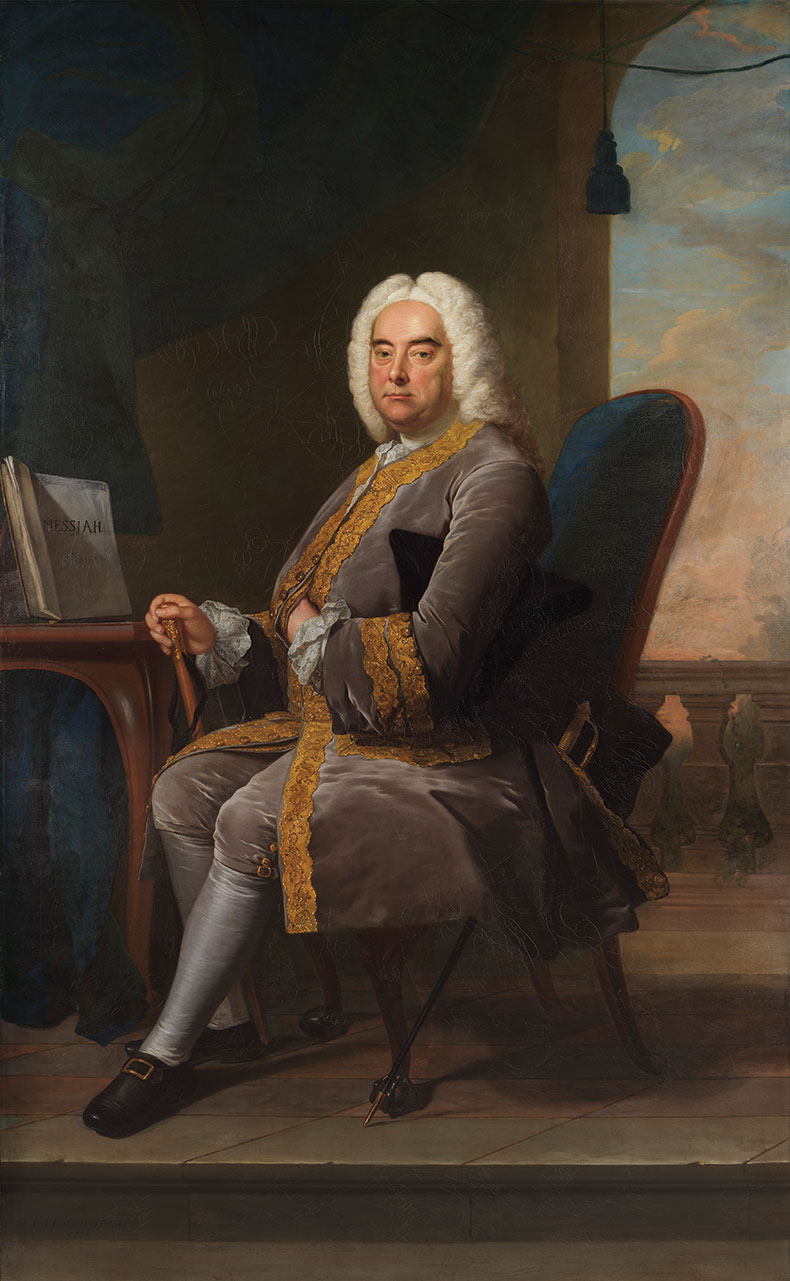
George Frideric Handel (1756), Thomas Hudson. National Portrait Gallery, London
When I ask Cullinan if he is at all concerned about the culture wars being conducted outside the museum, or of being accused of pandering to trends, he seems quietly and refreshingly unswayed: ‘We’re not here to have the final say or to be the definitive last word, although it’s very important that people feel we’re authoritative and trustworthy and reliable. We’re here to initiate a conversation and then it will be over to other people to have that debate.’
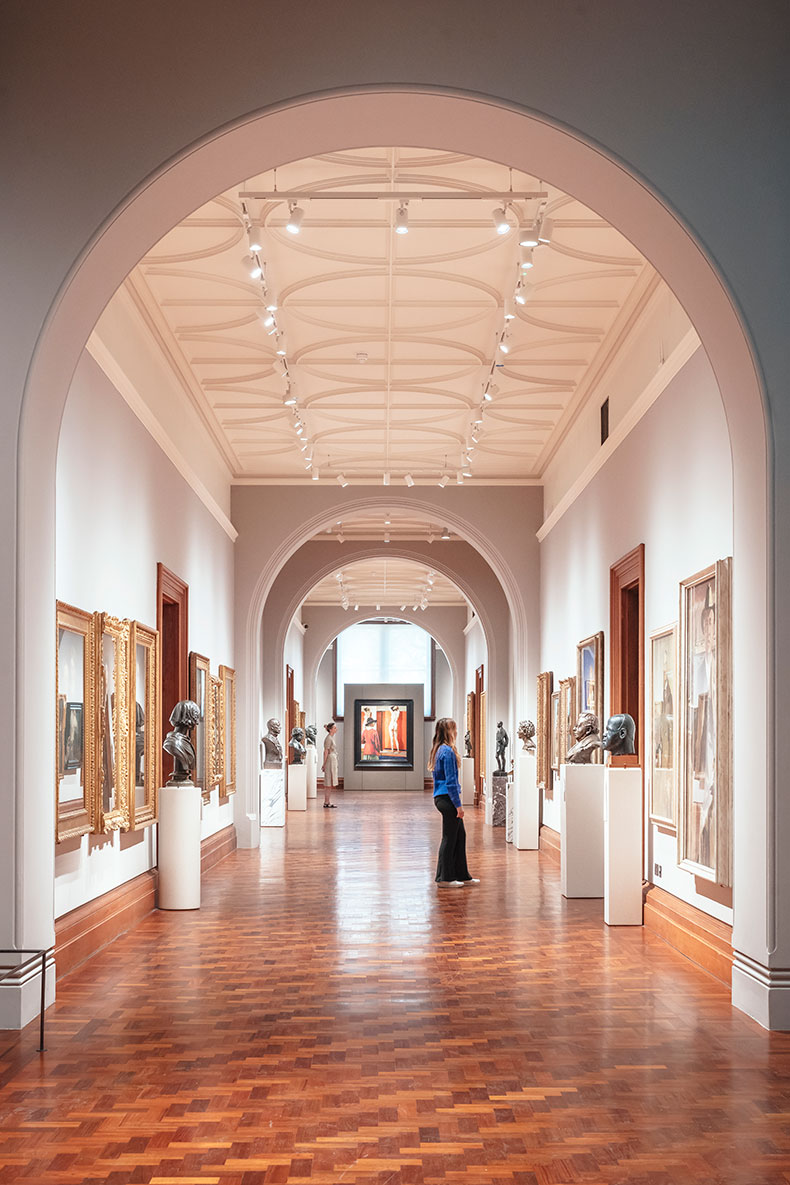
The Blavatnik Wing at the National Portrait Gallery, London. Photo: Jim Stephenson
Among the talk of more light, air and public circulation, however, there is one room I miss very much. (I try not to look too dismayed when Cullinan tells me how unpopular it was with visitors.) The ‘Statesmen’s Corridor’, designed by the architect Piers Gough in the 1990s, was a witty display of alternating white marble busts and solemn oil paintings in a purplish-blue gallery. As Room 18 currently does, it told a story in three dimensions, suggesting that while its occupants may have taken themselves very seriously, there was no need for us to do so – a spatial counterpart to Strachey’s Eminent Victorians of 1918, if you like. Now the marble busts have been banished, the walls are white and the woodwork is gone. I may, of course, be hanging on to a late (and early) 20th-century version of the 19th century. On the other hand, this rehang will last for a generation and the permanent collection isn’t going anywhere. Perhaps all the busts will be back one day.
This is a preview of the July/August issue of Apollo. To subscribe, click here.
Unlimited access from just $16 every 3 months
Subscribe to get unlimited and exclusive access to the top art stories, interviews and exhibition reviews.

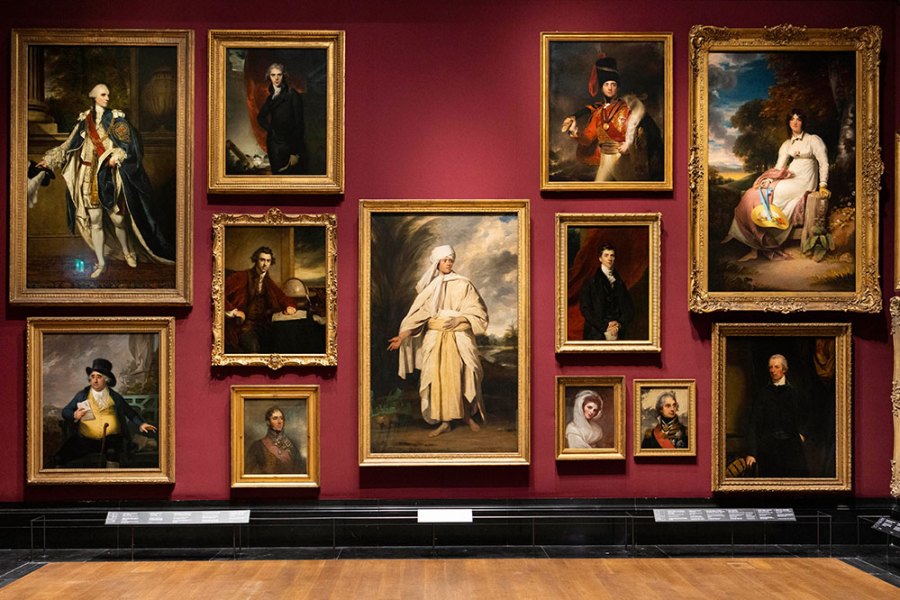
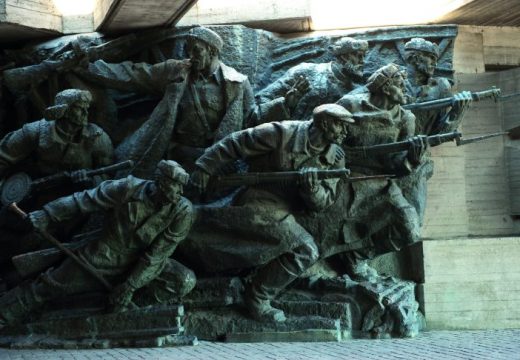
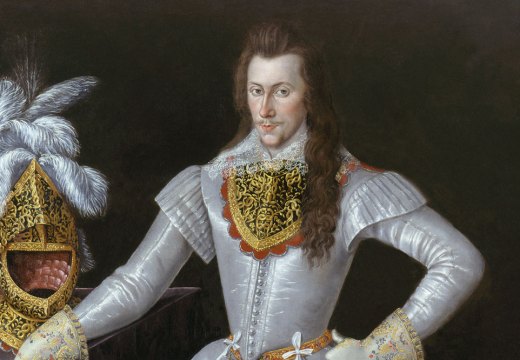
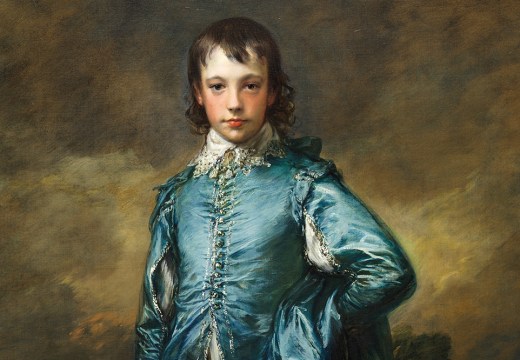









![Masterpiece [Re]discovery 2022. Photo: Ben Fisher Photography, courtesy of Masterpiece London](http://www.apollo-magazine.com/wp-content/uploads/2022/07/MPL2022_4263.jpg)
Has arts punditry become a perk for politicos?